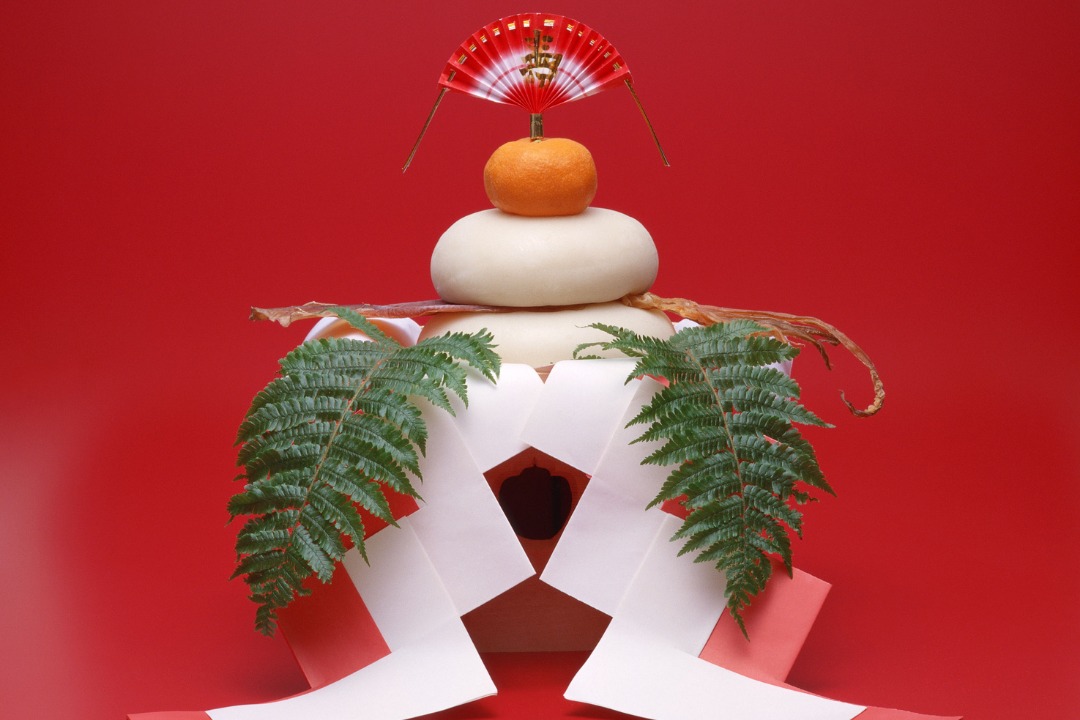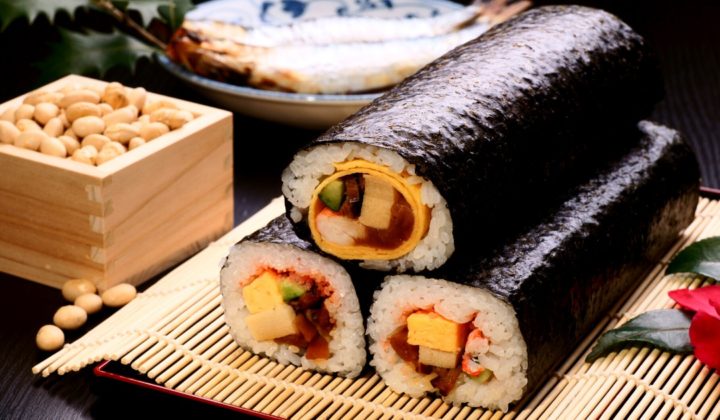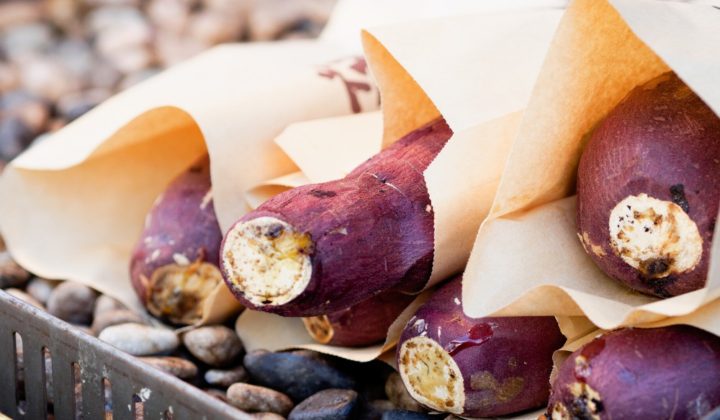Mochi is often one of the main ingredients in many Japanese winter recipes. This season, why not try giving mochi its own place in your kitchen and seeing how flexible an ingredient it is!
Mochi is popular around the New Year as it is thought that eating the stretchy mochi during the New Year period will help you “stretch” out your years (however, this doesn’t work if you choke on it so please exercise caution when eating!).
Three Long-Life Mochi Recipes
Zenzai (善哉)

Photo credit: canva
Zenzai is a traditional Japanese dessert that is often eaten during the winter. It usually consists of a sweet red bean soup with either mochi (pounded rice cakes) or shiratama dango (glutinous rice flour dumplings), but many people also add extras like chestnuts.
A similar dessert to Zenzai is oshiruko, however, the main difference between the two is that oshiruko is often prepared using smashed adzuki beans or an adzuki bean paste and served as a smooth soup. Zenzai on the other hand is often served either with just the beans or with both the soup and the beans together and is more commonly associated with Western Japan.
Zenzai is often served with something sour or salty to combat the sweetness of the zenzai and cleanse the palate.
An Easy Recipe For Zenzai (2-3 servings)
-
- 110g adzuki beans
- 500ml water
- Small pinch of sea salt
- 100g sugar (adjust to your liking)
- 2 pieces of kiri mochi/shiratama dango (to your liking)
- umeboshi pickled plums (optional)
- Wash the adzuki beans thoroughly, until the water runs clear making sure to discard any beans that float before draining the excess water.
- Put the beans in a pan with the water and bring to a boil.
- Once the beans are boiling, you will need to place an otoshibuta over the top to keep the beans below the water level and turn the heat down to medium and simmer for forty minutes. (If you don’t have one, here’s an easy way to make one!)
- The beans should be fully submerged for the whole forty minutes, so if the water level drops, add some more water!
- After forty minutes, try picking up a bean and squashing it with your fingers. If it breaks apart easily, then it is done. If not, try simmering the beans for an extra ten minutes.
- Add the sugar and salt letting both dissolve completely.
- Cut the kirimochi into halves or quarters before putting it in the oven until the outside is crispy and the inside is soft.
- Serve the mochi on top of the red bean soup, plate the umeboshi and enjoy!
Isobeyaki (磯辺焼き)
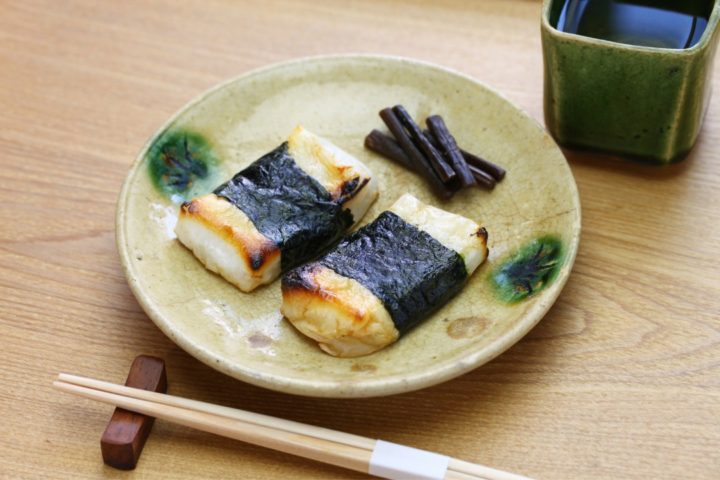
Photo credit: canva
Isobeyaki is a great food for the New Year as it is a quick and easy snack that tastes delicious too!
What’s great about this recipe is that it’s so flexible! If you don’t like mochi, you can try doing this with daikon radishes or even potatoes!
An Easy Recipe For Isobeyaki (5 servings)
-
- 4 tbsps soy sauce
- 3 tbsps sugar
- 3 tbsps cooking sake
- 5 pieces kirimochi (hard mochi)
- 5 pieces seaweed, cut into strips (optional)
- Mix together the soy sauce, cooking sake, and sugar in a small bowl.
- There are two ways to prepare the mochi for isobeyaki;
- For those who prefer the crispy texture of baked mochi, first heat up the mochi in an oven or toaster oven before moving to a frying pan.
- For those who prefer softer mochi, add the mochi straight into the frying pan.
- Once the mochi is in the frying pan, add the soy sauce, sake and sugar mixture to the pan.
- Cook until the mochi is a deep brown colour.
- Take the mochi out of the pan and wrap each piece in a strip of seaweed and serve!
Ozōni (お雑煮)
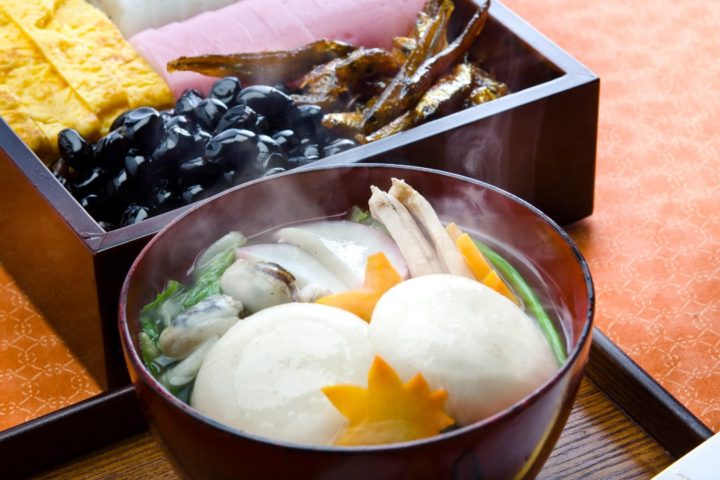
Photo credit: canva
Ozōni is a traditional Japanese soup drunk on New Year’s Day and it is considered to be a good start to the year ahead if you eat this on New Year’s Day.
Ozōni is a great recipe for those who love to experiment with ingredients, as each region (and sometimes even each family!) has its own version of ozōni, with every region claiming that theirs is the best. In the Kantō region, it is common to use a dashi-based stock as the base for the soup, whereas in areas of the Kansai region, white miso is used for the soup base.
In the Kantō and Tohoku regions, it is common to cut the mochi into squares and grill the mochi before putting it into the soup, whereas in the Kansai and Chūgoku regions, it is not unusual to boil the mochi before putting it into the soup.
The main thing most ozōni have in common is that they consist of a medley of mochi, some form of protein and/or seafood, and a mix of vegetables in a soup base.
This time, I’ll be introducing a recipe from the Kantō region.
An Easy Recipe For Ozōni (2 servings)
-
- 1 tbsp soy sauce
- 1 tbsp mirin
- 2 tbsps dashi granules
- 150g chicken breast
- 500ml water
- 1 carrot
- 1/2 onion
- 2 pieces kirimochi
- 2 shiitake mushrooms
- mitsuba (for garnishing)
- First, you will need to prepare the vegetables; Cut the stalks off the shiitake mushrooms, cutting three lines in a shape of a star into the centre of the mushroom head. Then slice the onions at a centimetre width lengthwise before slicing the carrots into discs at about a 1cm width.
- Cut the chicken into bite-sized pieces.
- In a pot, add the water, the dashi, the mirin and the soy sauce and turn up to high heat.
- When it reaches a boil, add in the chicken and veg.
- Simmer for 10 minutes. When the chicken is cooked through, take the pot off the heat.
- Place the kirimochi on a baking tray before baking for 5 minutes in an oven or toaster oven or until the mochi has become soft.
- Serve with mitsuba and enjoy!
(Please exercise caution when eating mochi as it can easily become stuck in the throat).
For More Related Articles:
- Common Types of Oden: Japan’s Favourite Nabemono
- Preparing Christmas Dinner in Japan
- Delicious Winter Food in Japan
- 3 easy to cook Japanese hot pot recipes for cold winter
- Enjoying Japan With Dietary Restrictions and Food Allergies
Featured image credit: canva

